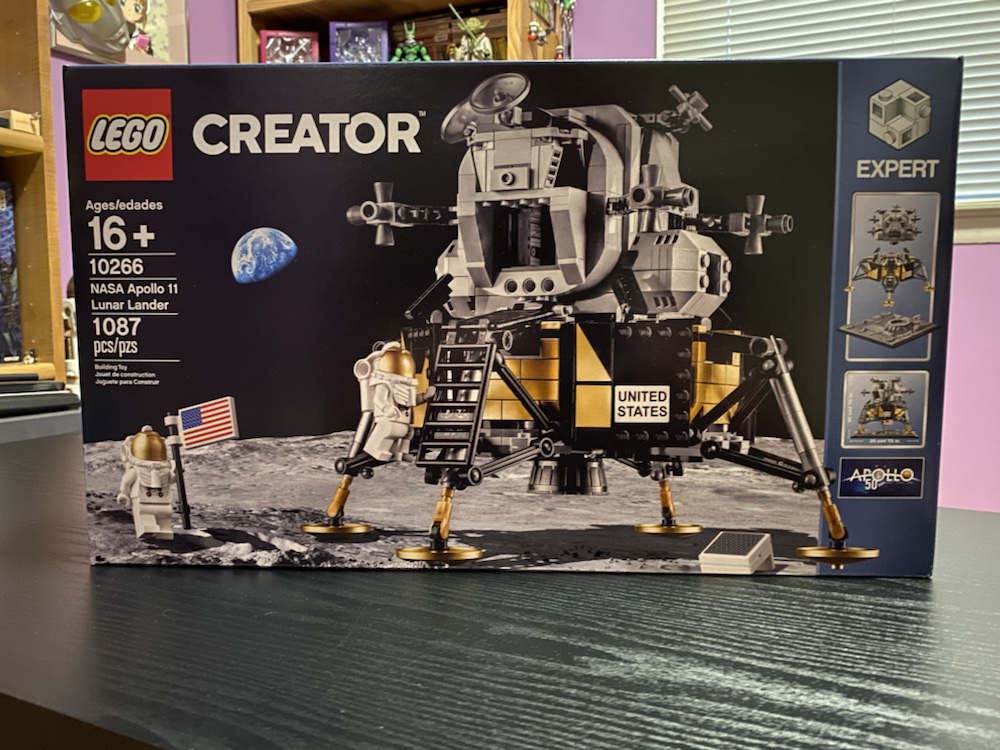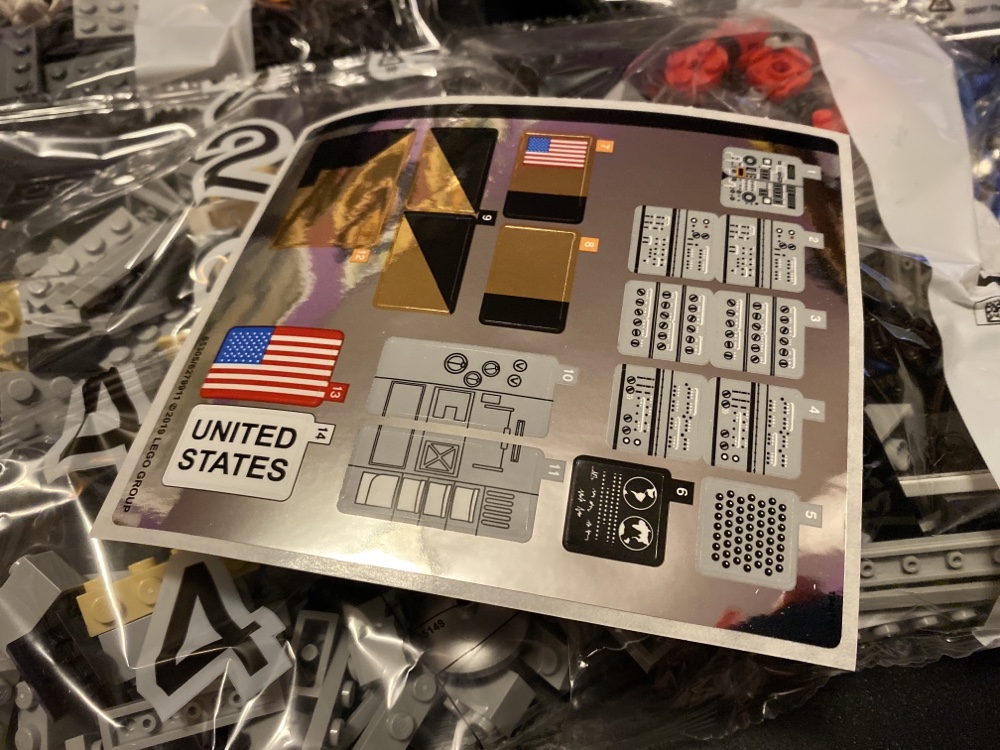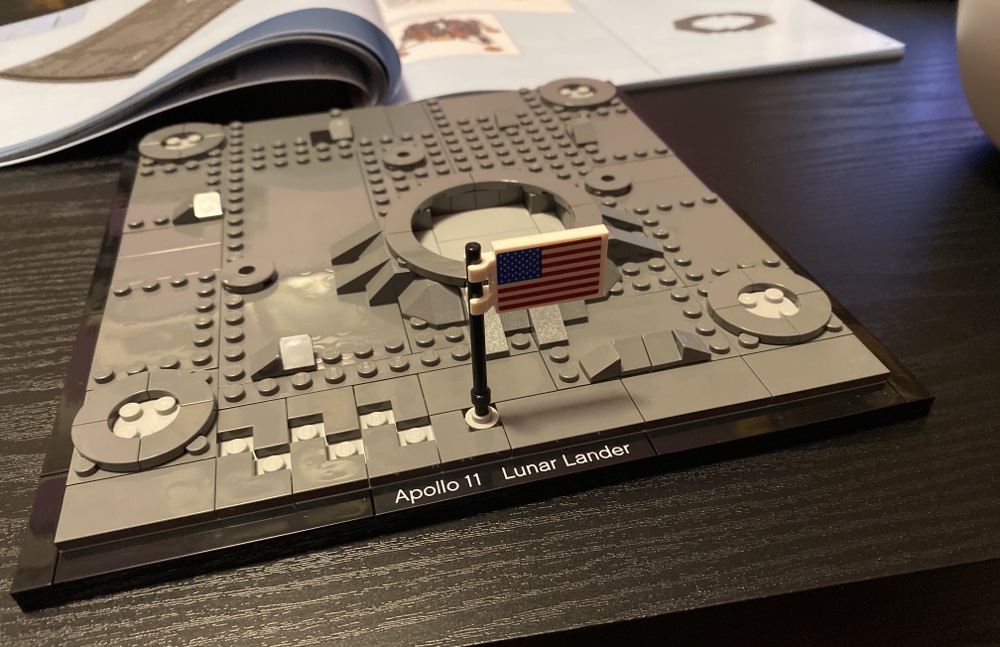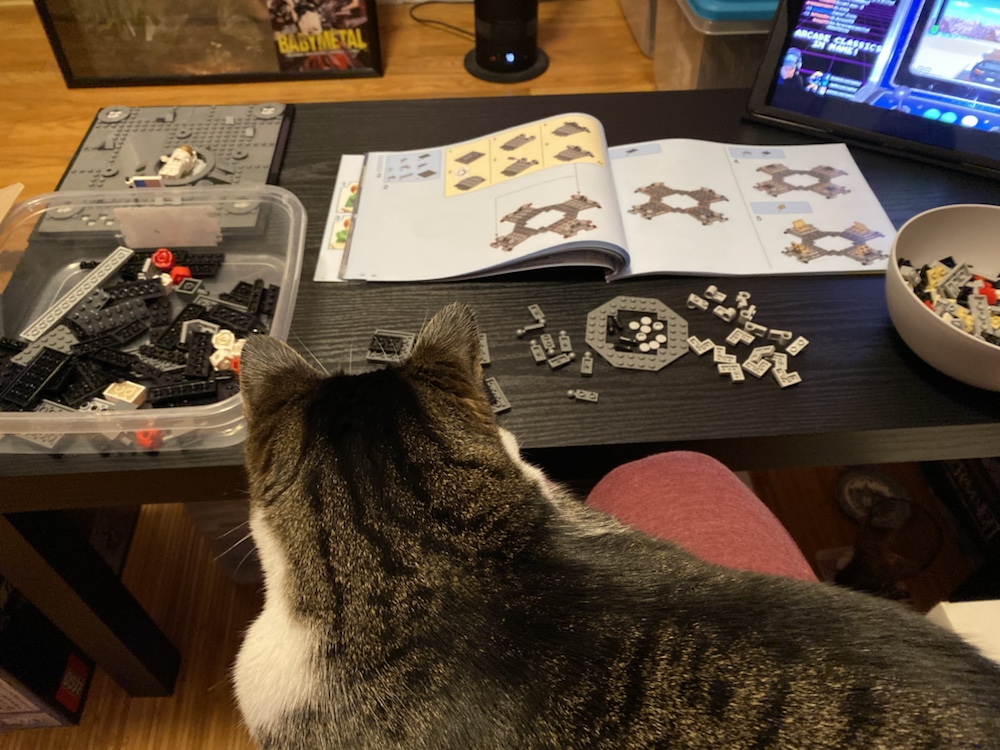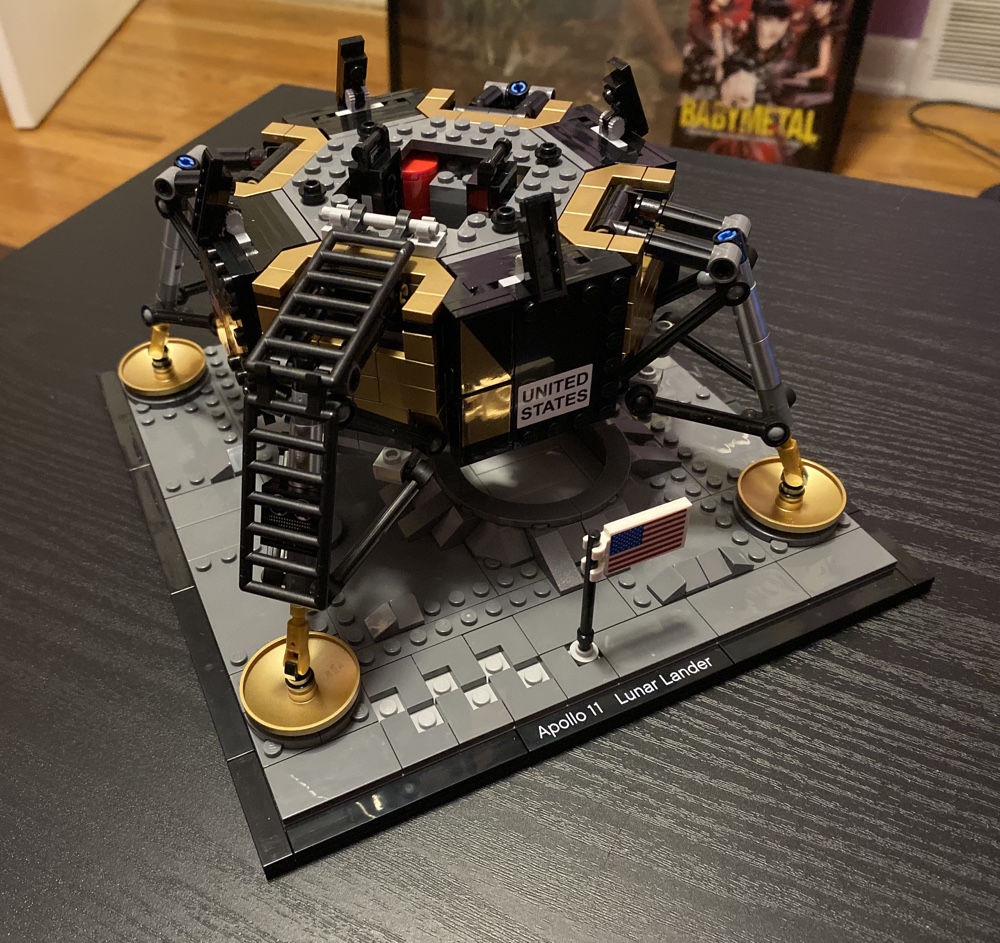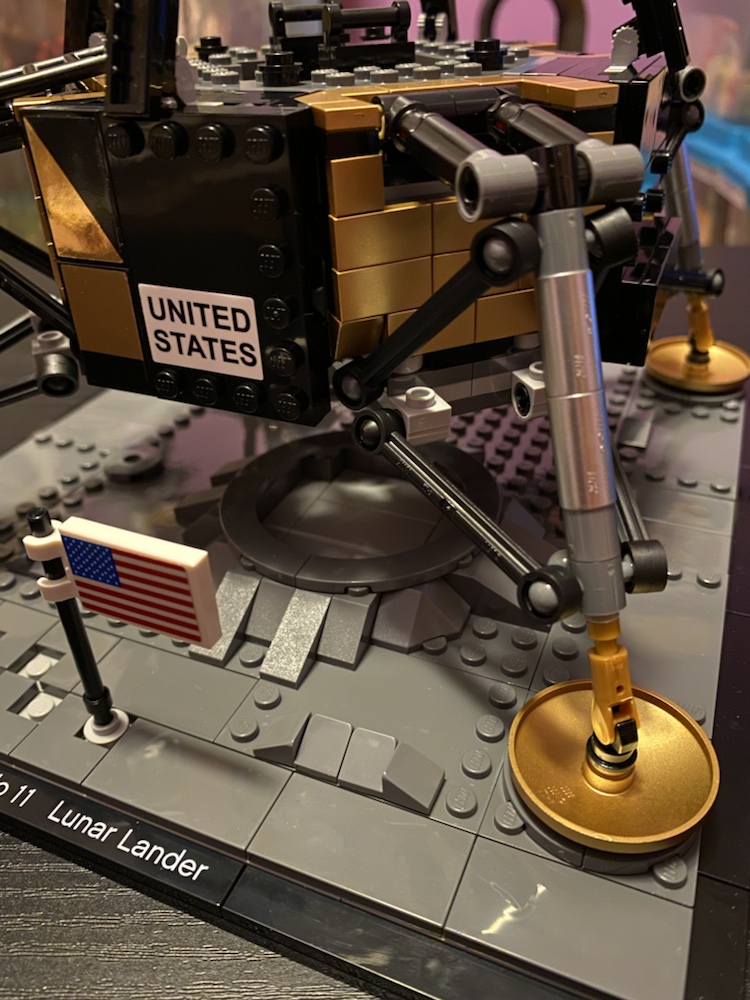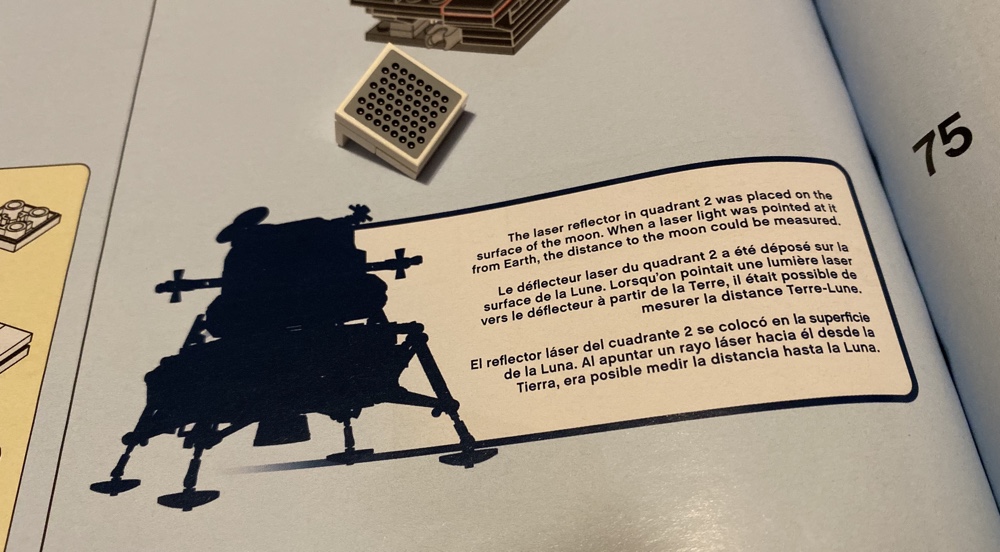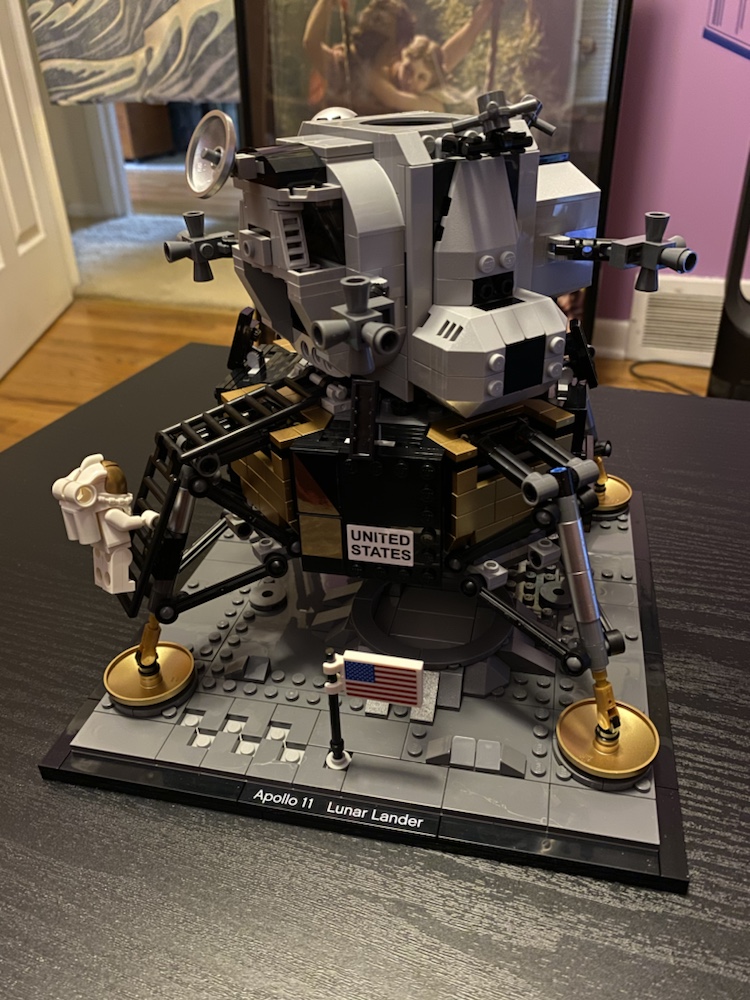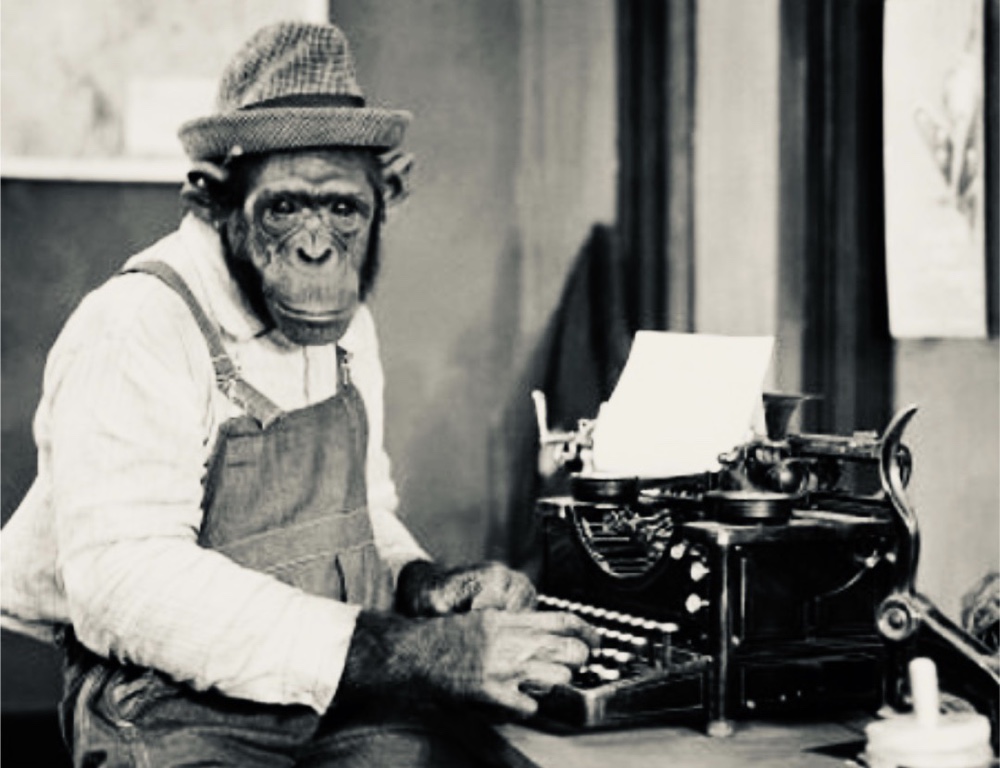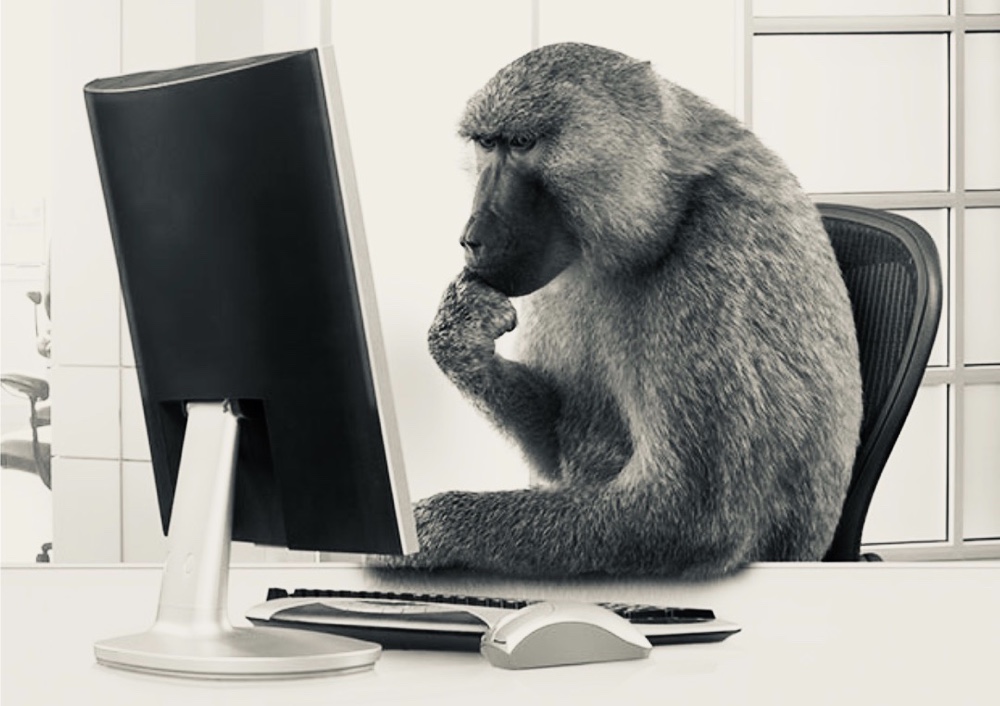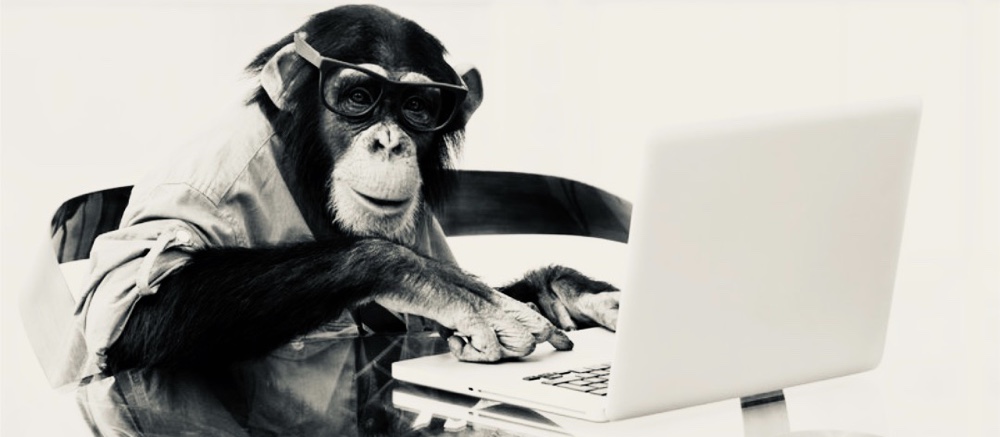In the last 48 hours we received a lot of snow. I took regular photos from the same angle to show the accumulation. Here they are:
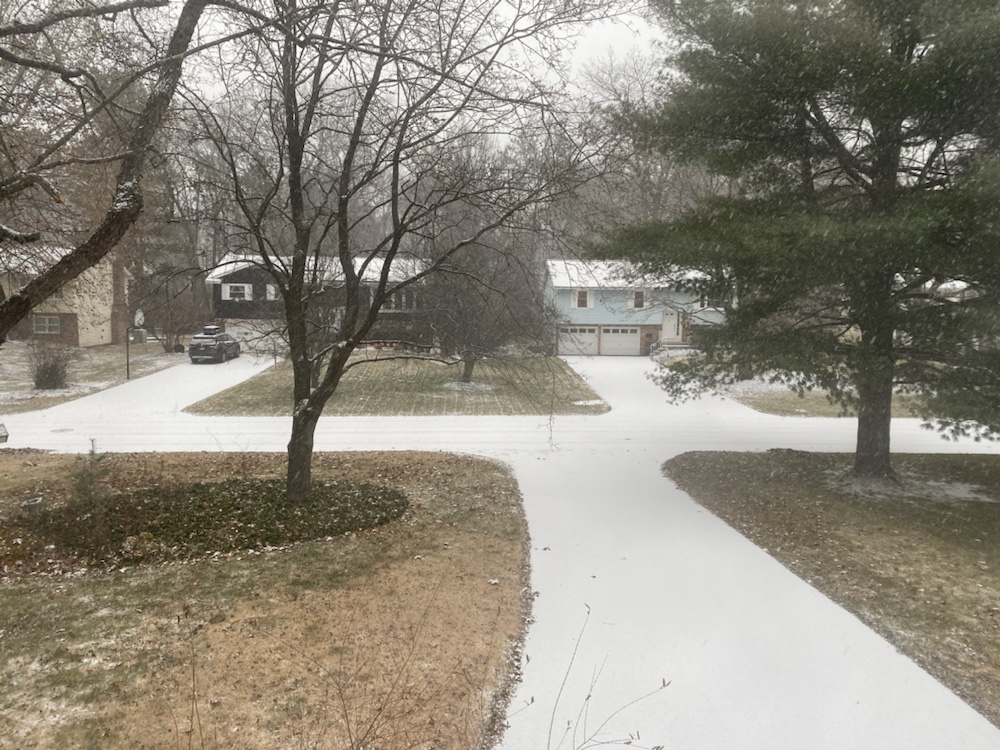

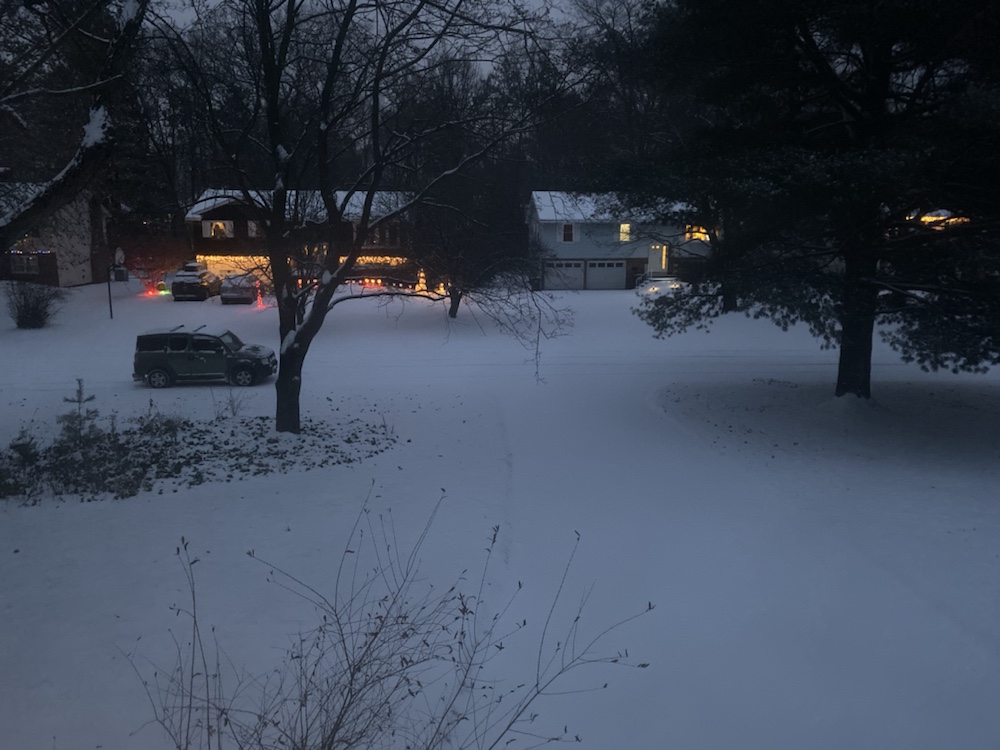
The above three run from noon to about 5 pm on Sunday. The snow was falling lightly at first, but picked up after nightfall.

The above is a 10 pm shot. It looks brighter than the 5 pm one due to the remarkable low light camera mode of my new iPhone. You can clearly see the snow has been coming down since the last shot: the driveway is barely visible here.
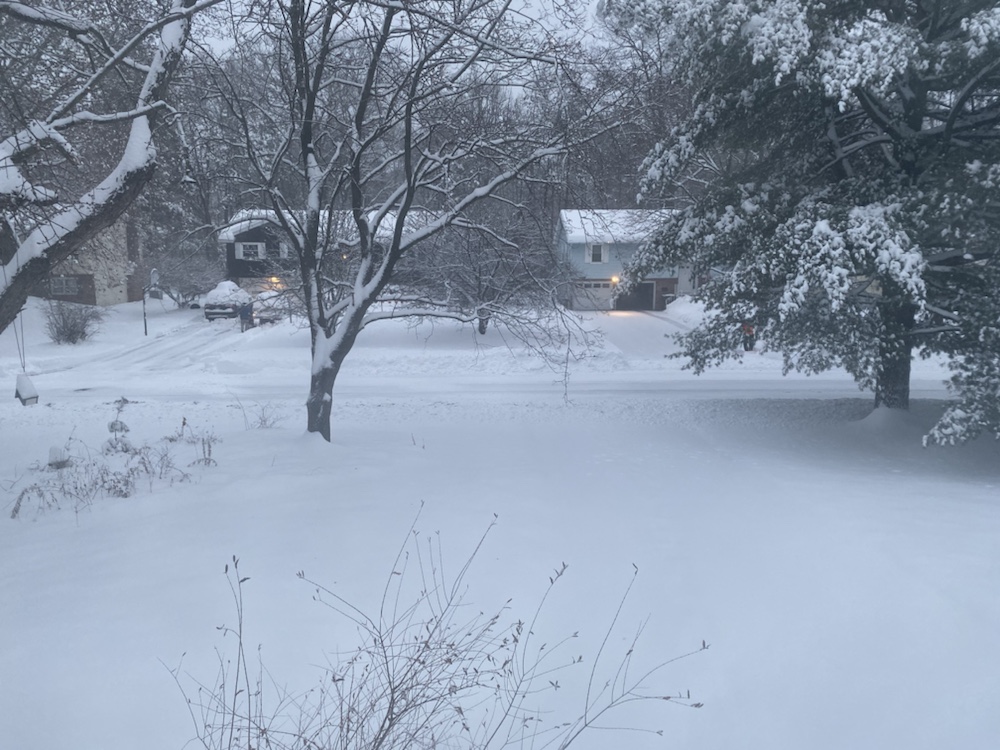
Above shows 6 am Monday morning. According to the weather service we’d received about 16 inches (~38 cm) overnight, and it was heavy snow which proved difficult to remove. Down near the street it was as deep as our snowthrower can handle, and although we have a powerful machine it really struggled.
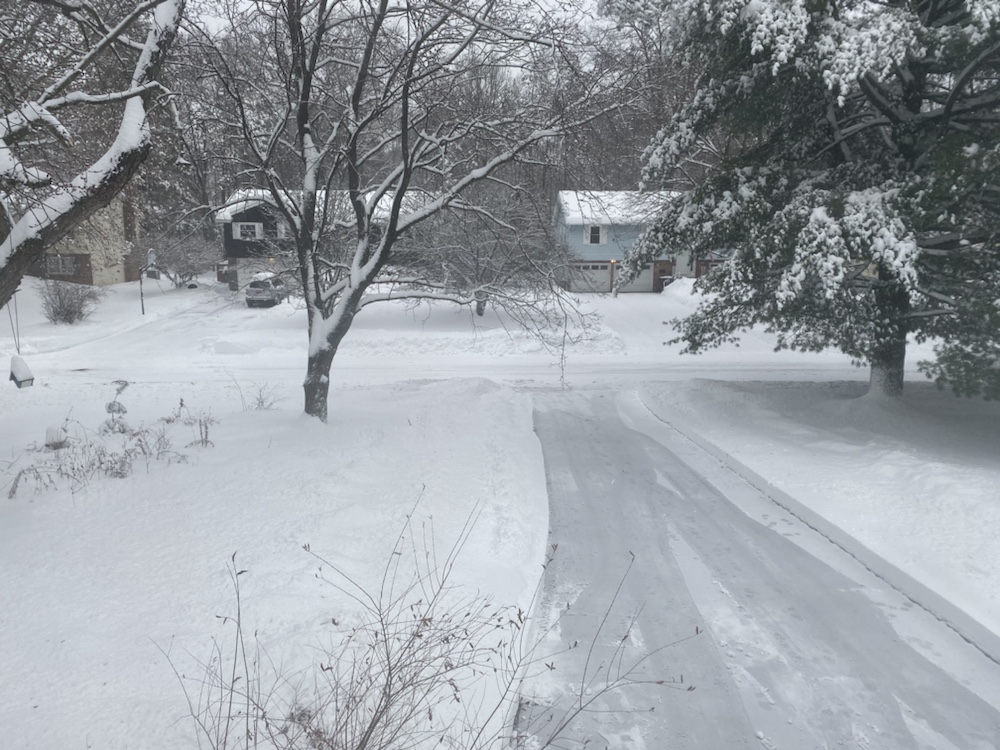
That’s immediately after we finished clearing the snow. It was still falling lightly at this point. Although it was Monday almost everything was cancelled and we were both staying home for the day.
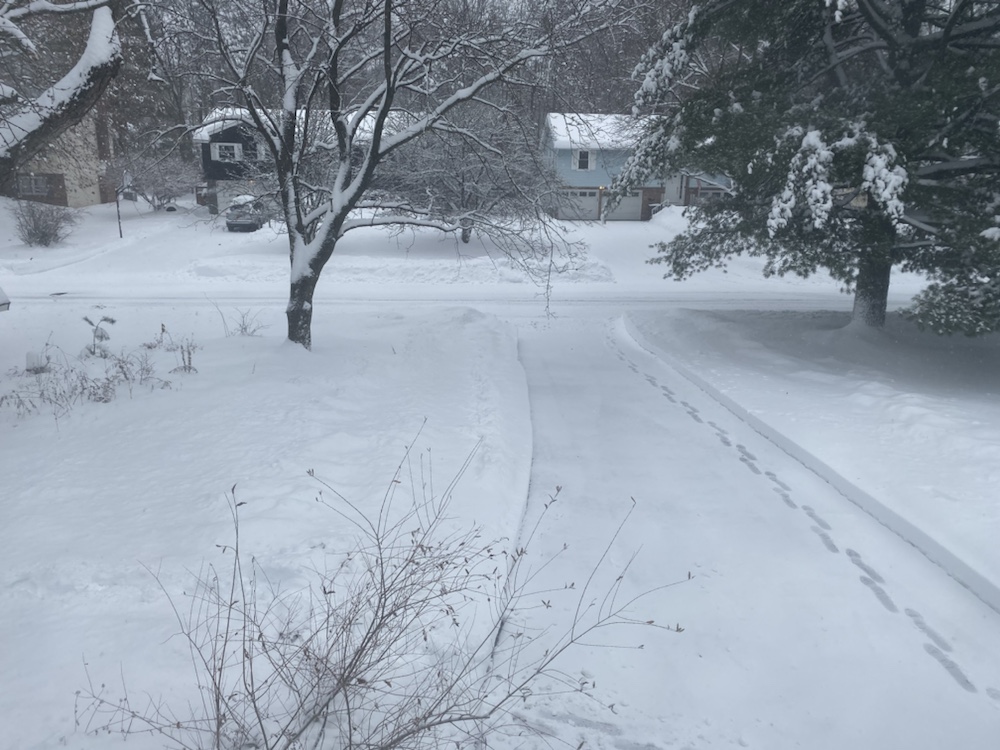
By around lunchtime not much had changed. The footprints were from the postman, who isn’t stopped by ‘a bit’ of snow!
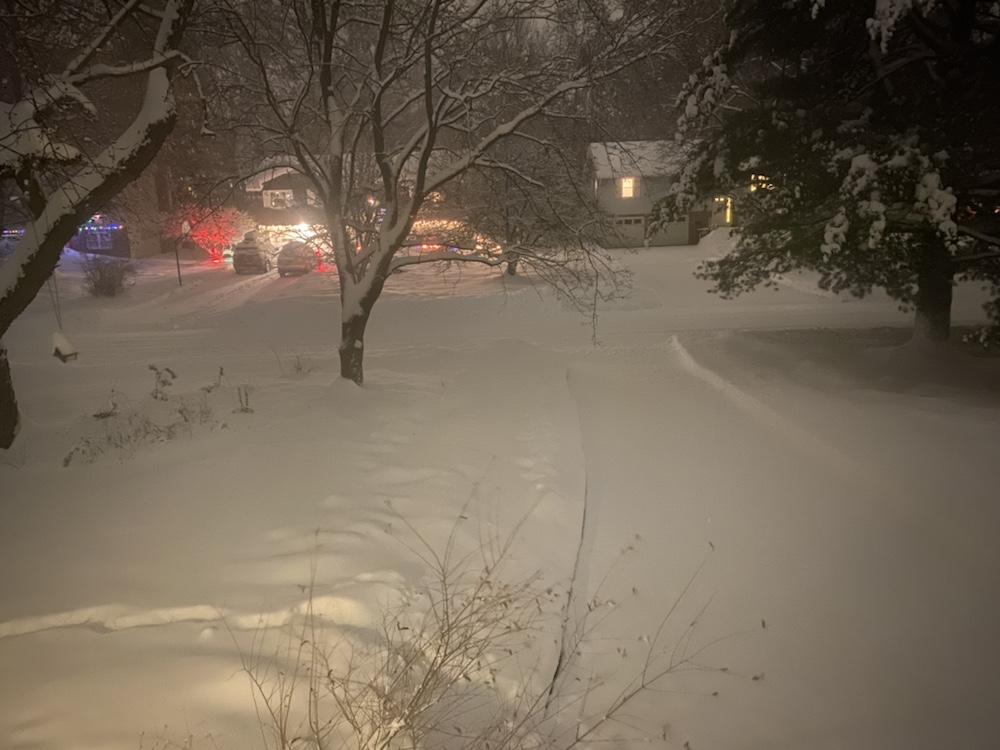
By evening though (this is around 8 pm Monday) you can see it had built up somewhat again: there had probably been another 3-4 inches by this point.
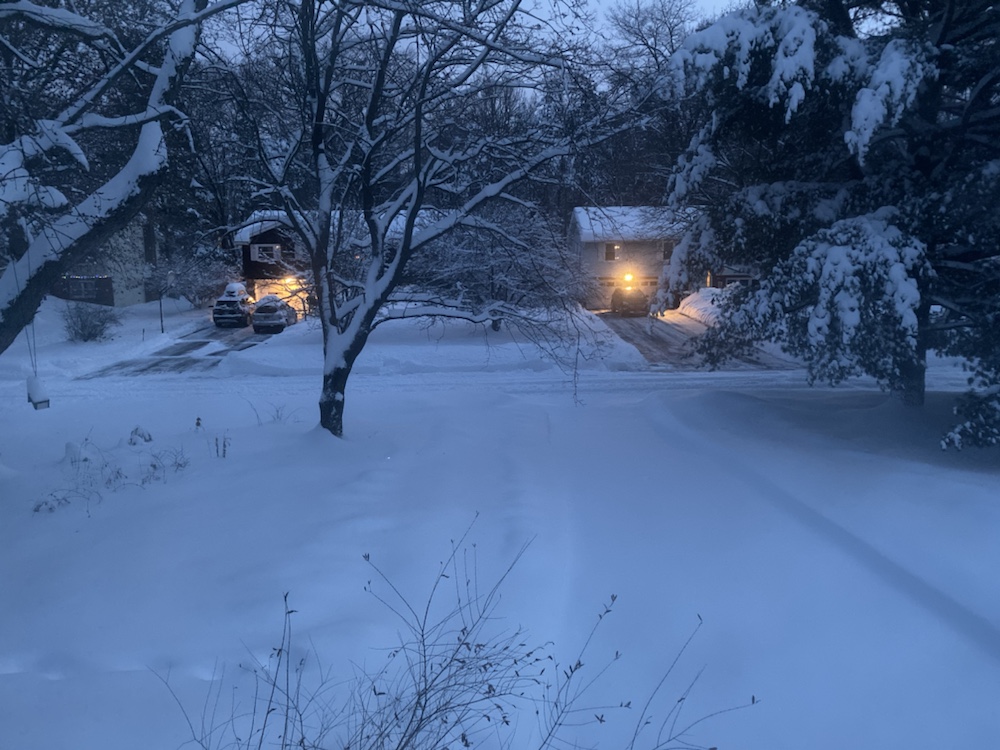
And then we woke today to this: another 6+ inches since yesterday. Once again it was tricky to remove due to heaviness and the cold (it was -4 C) but at least it had stopped falling.

And here’s the final shot, after we had finished this morning. All told the official tally is 22.6 inches of snow (57.4 cm) in Albany and slightly more where we live just to the south. It was the 8th biggest snowfall of all time in this city. I expect well remember it for a while 🙂
